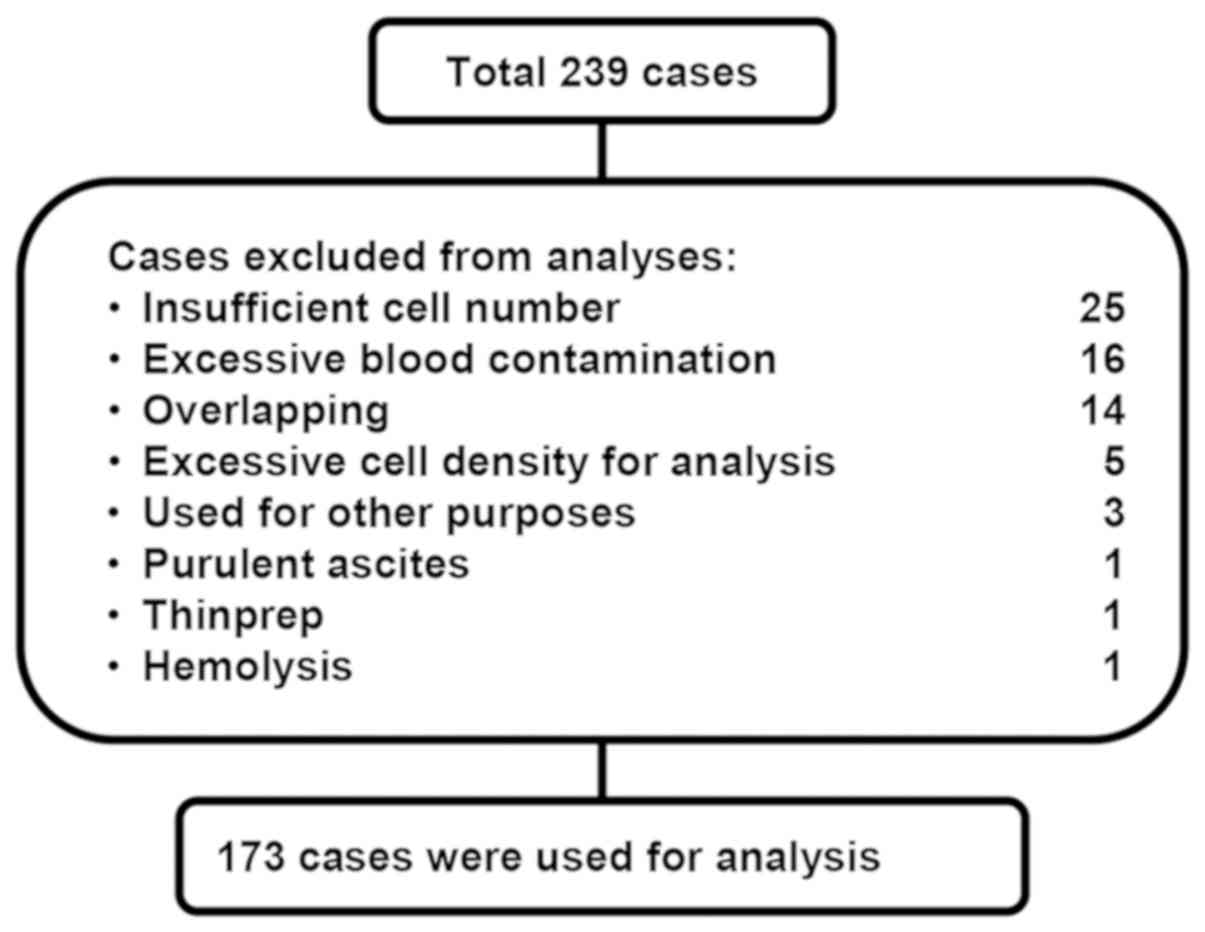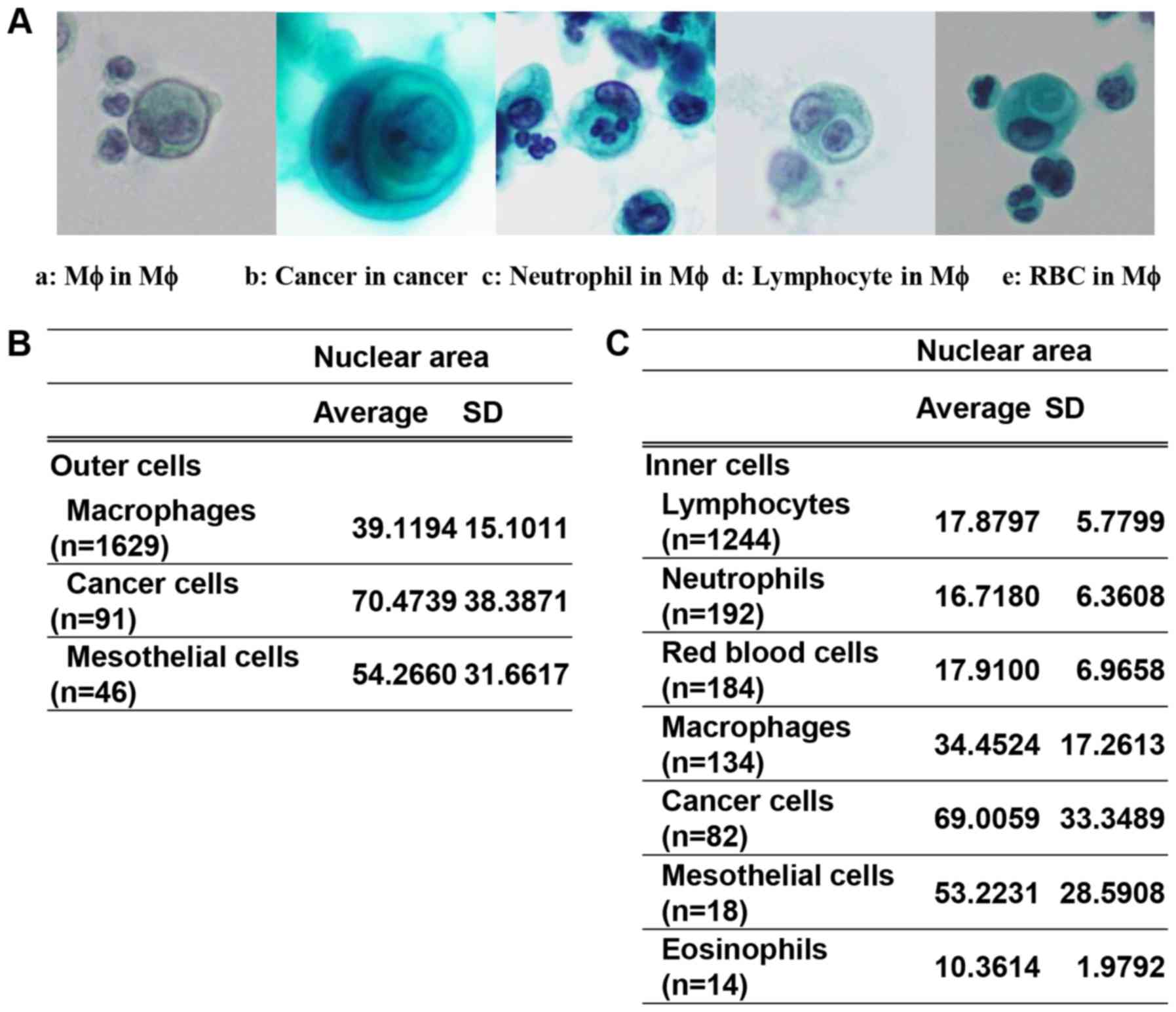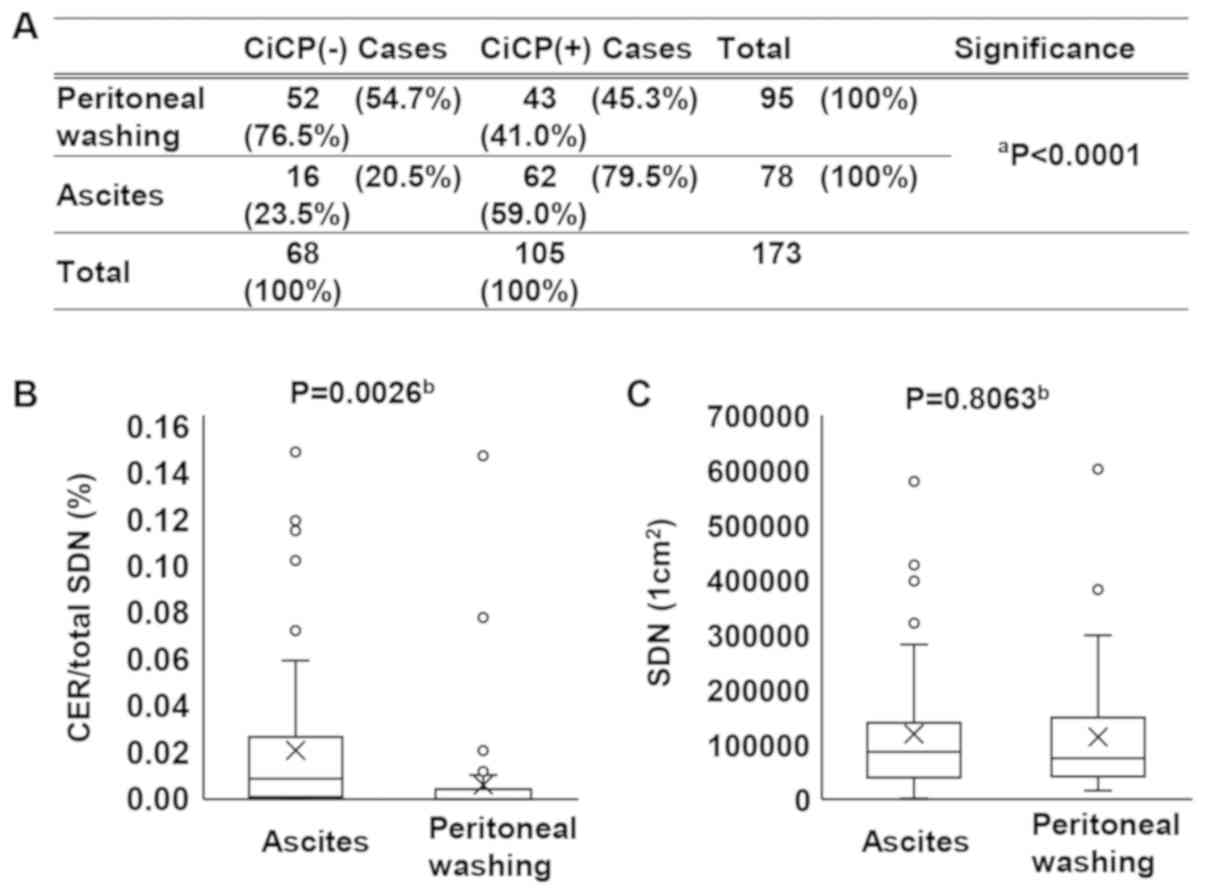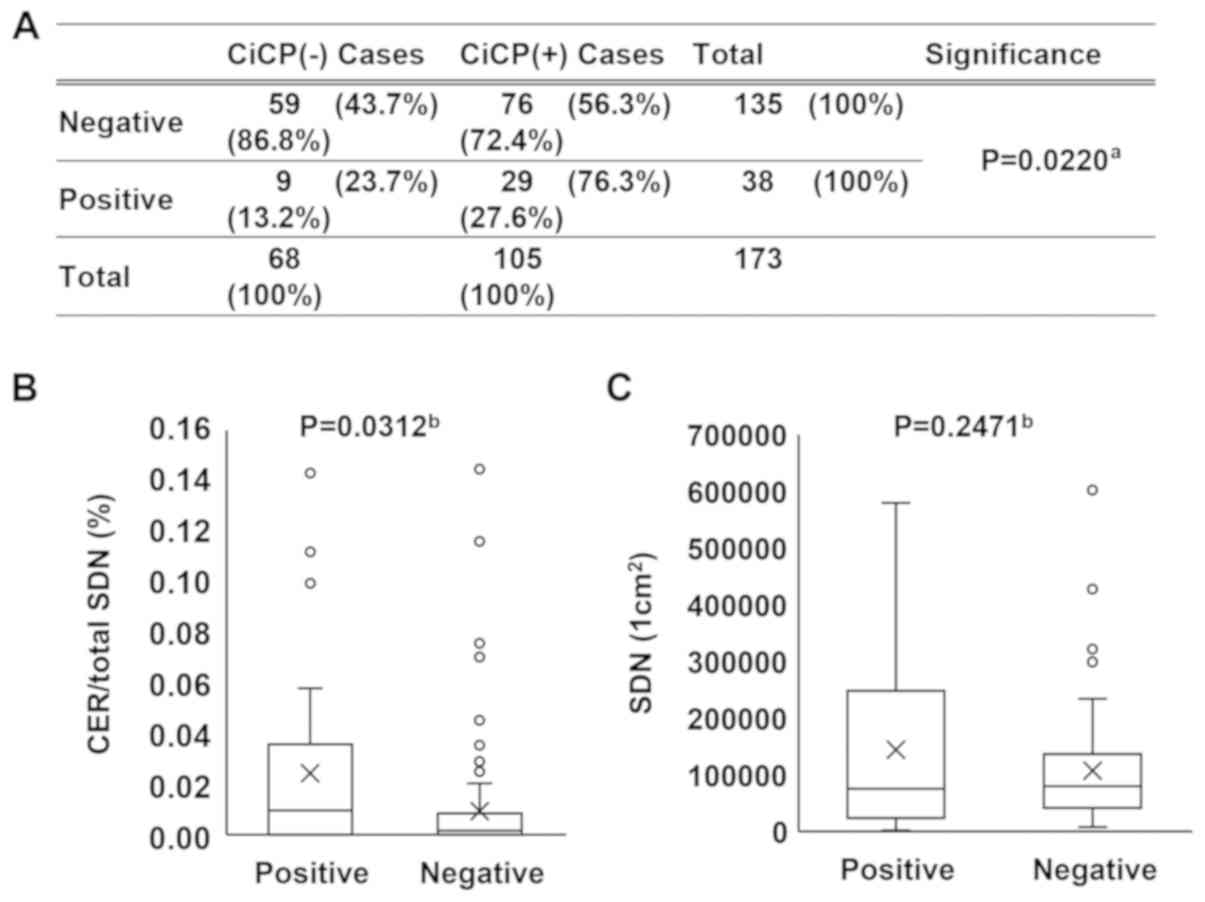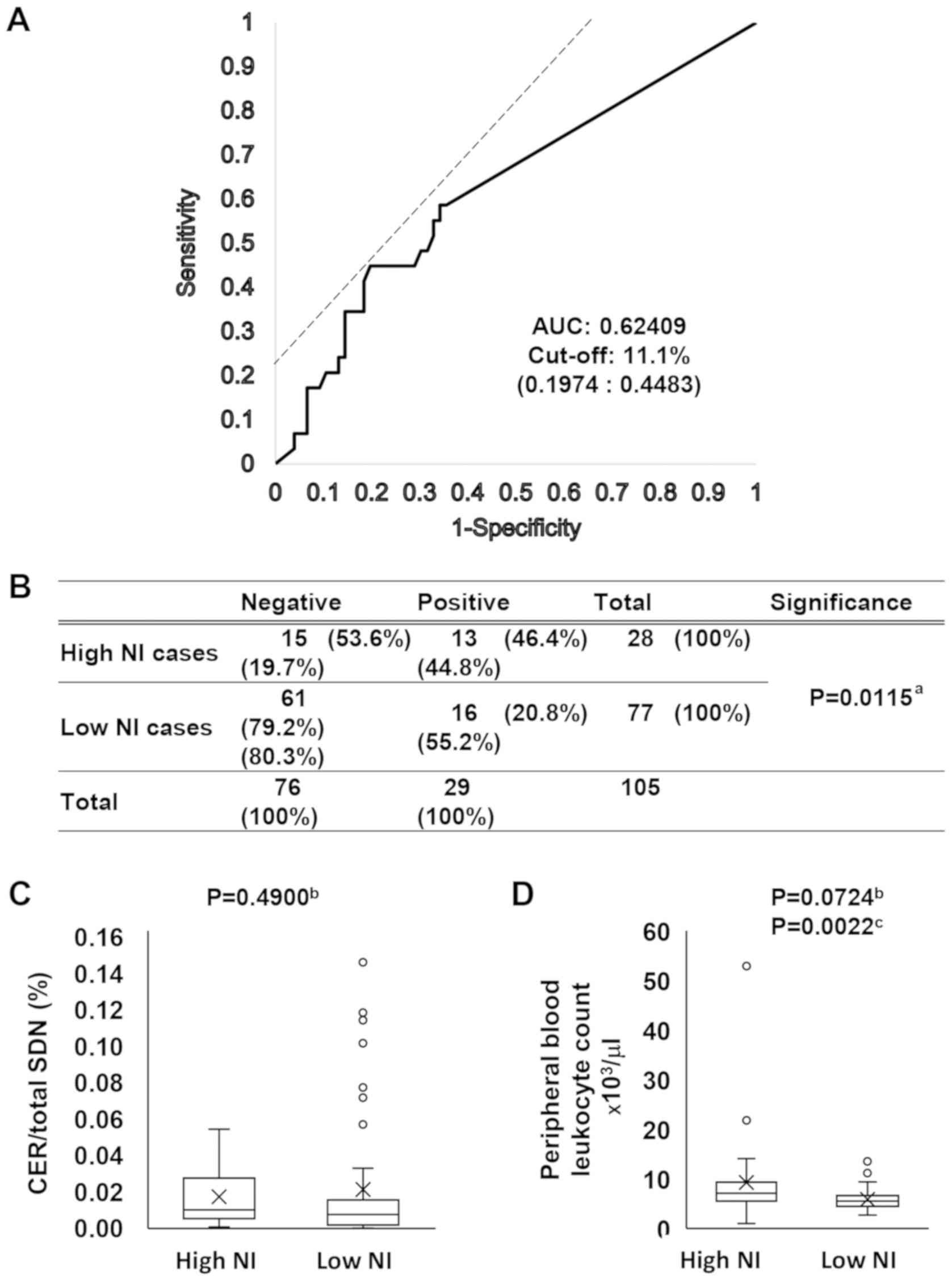|
1
|
Lewis W: The engulfment of living blood
cells by others of the same type. Anatomical Record. 31:43–49.
1925. View Article : Google Scholar
|
|
2
|
Humble JG, Jayne WH and Pulvertaft RJ:
Biological interaction between lymphocytes and other cells. Br J
Haematol. 2:283–294. 1956. View Article : Google Scholar : PubMed/NCBI
|
|
3
|
Gupta N, Jadhav K and Shah V:
Emperipolesis, entosis and cell cannibalism: Demystifying the
cloud. J Oral Maxillofac Pathol. 21:92–98. 2017. View Article : Google Scholar : PubMed/NCBI
|
|
4
|
Rastogi V, Sharma R, Misra SR, Yadav L and
Sharma V: Emperipolesis-a review. J Clin Diagn Res. 8:ZM01–ZM02.
2014.PubMed/NCBI
|
|
5
|
Samii K and Pasteur E: Images in
hematology. Emperipolesis Am J Hematol. 59:641998. View Article : Google Scholar
|
|
6
|
Rosai J and Dorfman RF: Sinus
histiocytosis with massive lymphadenopathy. A newly recognized
benign clinicopathological entity. Arch Pathol. 87:63–70.
1969.PubMed/NCBI
|
|
7
|
Foucar E, Rosai J and Dorfman R: Sinus
histiocytosis with massive lymphadenopathy (Rosai-Dorfman disease):
Review of the entity. Semin Diagn Pathol. 7:19–73. 1990.PubMed/NCBI
|
|
8
|
Singhal N, Handa U, Bansal C and Mohan H:
Neutrophil phagocytosis by tumor cells-a cytological study. Diagn
Cytopathol. 39:553–555. 2011. View
Article : Google Scholar
|
|
9
|
Kale A: Cellular Cannibalism. J Oral
Maxillofac Pathol. 19:7–9. 2015. View Article : Google Scholar : PubMed/NCBI
|
|
10
|
Bansal C, Tiwari V, Singh U, Srivastava A
and Misra J: Cell cannibalism: A cytological study in effusion
samples. J Cytol. 28:57–60. 2011. View Article : Google Scholar : PubMed/NCBI
|
|
11
|
Sharma N and Dey P: Cell cannibalism and
cancer. Diagn Cytopathol. 39:229–233. 2011.PubMed/NCBI
|
|
12
|
Fais S: Cannibalism: A way to feed on
metastatic tumors. Cancer Lett. 258:155–164. 2007. View Article : Google Scholar : PubMed/NCBI
|
|
13
|
Richards DM and Endres RG: How cells
engulf: A review of theoretical approaches to phagocytosis. Rep
Prog Phys. 80:1266012017. View Article : Google Scholar : PubMed/NCBI
|
|
14
|
Koss L and Melamed M: Fundamental concepts
of neoplasia: Benign tumor and cancer. Koss's diagnostic cytology
and its histopathologic bases. Koss L and Melamed M: Lippincott
Williams & Wilkins; Philadelphia: pp. 143–179. 2006
|
|
15
|
Al-Abbadi M: Warthin's tumor. Salivary
gland Cytology. Al-Abbadi M: Wiley-Blackwell; Hobokwnm NJ: pp.
69–75. 2011, View Article : Google Scholar
|
|
16
|
Kini S: Gonads (Ovaries ans Testis). Color
atlas of diagnosis in exfoliative and aspiration cytopathology.
Wolters Kluwer/Lipponcott Williams & Wilkins; Philadelphia, PA:
pp. 852–869. 2011
|
|
17
|
Saxena S, Beena KR, Bansal A and Bhatnagar
A: Emperipolesis in a common breast malignancy. A case report Acta
Cytol. 46:883–886. 2002. View Article : Google Scholar
|
|
18
|
Rane SR, Parkhi M, Vishwasrao S and Nakate
L: Non-Hodgkin's lymphoma with extensive emperipolesis mimicking
Rosai-Dorfman disease: A rare case report. Indian J Pathol
Microbiol. 62:319–322. 2019. View Article : Google Scholar : PubMed/NCBI
|
|
19
|
Meykler S, Baloch ZW and Barroeta JE: A
case of marginal zone lymphoma with extensive emperipolesis
diagnosed on pleural effusion cytology with immunocytochemistry and
flow cytometry. Cytopathology. 27:70–72. 2016. View Article : Google Scholar
|
|
20
|
Lopes LF, Bacchi MM, Coelho KI, Filho AA
and Bacchi CE: Emperipolesis in a case of B-cell lymphoma: A rare
phenomenon outside of Rosai-dorfman disease. Ann Diagn Pathol.
7:310–313. 2003. View Article : Google Scholar : PubMed/NCBI
|
|
21
|
Pinto D and Schmitt F: Current
applications of molecular testing on body cavity fluids. Diagn
Cytopathol. Mar 30–2020.Epub ahead of print. View Article : Google Scholar : PubMed/NCBI
|
|
22
|
Renshaw AA: Quality improvement in
cytology: Where do we go from here? Arch Pathol Lab Med.
135:1387–1390. 2011. View Article : Google Scholar : PubMed/NCBI
|
|
23
|
Ministry of Education Culture, Sports,
Science and Technology, and Ministry of Health, Labor and Welfare:
Ethical guidelines for medical and health research involving human
subjects. https://www.mhlw.go.jp/file/06-Seisakujouhou-10600000-Daijinkanboukousei-kagakuka/0000080278.pdfuri.
Accessed March 31, 2015.
|
|
24
|
Smith P and Gray W: Cervical
intraepithelial neoplasia and squamous cell carcinoma of the
cervix. Diagnostic Cytopathology. Gray W and Kocjan G: Churchill
Livingstone Elsevier; London: pp. 609–644. 2010, View Article : Google Scholar
|
|
25
|
Nakazato Y, Maeshima AM, Ishikawa Y,
Yatabe Y, Fukuoka J, Yokose T, Tomita Y, Minami Y, Asamura H,
Tachibana K, et al: Interobserver agreement in the nuclear grading
of primary pulmonary adenocarcinoma. J Thorac Oncol. 8:736–743.
2013. View Article : Google Scholar : PubMed/NCBI
|
|
26
|
Grilley-Olson JE, Hayes DN, Moore DT,
Leslie KO, Wilkerson MD, Qaqish BF, Hayward MC, Cabanski CR, Yin X,
Socinski MA, et al: Validation of interobserver agreement in lung
cancer assessment: Hematoxylin-eosin diagnostic reproducibility for
non-small cell lung cancer: The 2004 World Health Organization
classification and therapeutically relevant subsets. Arch Pathol
Lab Med. 137:32–40. 2013. View Article : Google Scholar
|
|
27
|
Lindauer K, Bartels T, Scherer P and
Kabiri M: Development and validation of an image analysis system
for the measurement of cell proliferation in mammary glands of
rats. Toxicol Pathol. 47:634–644. 2019. View Article : Google Scholar : PubMed/NCBI
|
|
28
|
Gordon S: Alternative activation of
macrophages. Nat Rev Immunol. 3:23–35. 2003. View Article : Google Scholar : PubMed/NCBI
|
|
29
|
Mantovani A, Sozzani S, Locati M, Allavena
P and Sica A: Macrophage polarization: Tumor-associated macrophages
as a paradigm for polarized M2 mononuclear phagocytes. Trends
Immunol. 23:549–555. 2002. View Article : Google Scholar : PubMed/NCBI
|
|
30
|
Yunna C, Mengru H, Lei W and Weidong C:
Macrophage M1/M2 polarization. Eur J Pharmacol. 877:1730902020.
View Article : Google Scholar : PubMed/NCBI
|
|
31
|
Sica A, Larghi P, Mancino A, Rubino L,
Porta C, Totaro MG, Rimoldi M, Biswas SK, Allavena P and Mantovani
A: Macrophage polarization in tumour progression. Semin Cancer
Biol. 18:349–355. 2008. View Article : Google Scholar : PubMed/NCBI
|
|
32
|
Lewis CE and Pollard JW: Distinct role of
macrophages in different tumor microenvironments. Cancer Res.
66:605–612. 2006. View Article : Google Scholar : PubMed/NCBI
|
|
33
|
Leek RD, Landers RJ, Harris AL and Lewis
CE: Necrosis correlates with high vascular density and focal
macrophage infiltration in invasive carcinoma of the breast. Br J
Cancer. 79:991–995. 1999. View Article : Google Scholar : PubMed/NCBI
|
|
34
|
Lissbrant IF, Stattin P, Wikstrom P,
Damber JE, Egevad L and Bergh A: Tumor associated macrophages in
human prostate cancer: Relation to clinicopathological variables
and survival. Int J Oncol. 17:445–451. 2000.PubMed/NCBI
|
|
35
|
Ohno S, Ohno Y, Suzuki N, Kamei T, Koike
K, Inagawa H, Kohchi C, Soma G and Inoue M: Correlation of
histological localization of tumor-associated macrophages with
clinico-pathological features in endometrial cancer. Anticancer
Res. 24:3335–3342. 2004.PubMed/NCBI
|
|
36
|
Hanada T, Nakagawa M, Emoto A, Nomura T,
Nasu N and Nomura Y: Prognostic value of tumor-associated
macrophage count in human bladder cancer. Int J Urol. 7:263–269.
2000. View Article : Google Scholar : PubMed/NCBI
|
|
37
|
Mäkitie T, Summanen P, Tarkkanen A and
Kivelä T: Tumor-infiltrating macrophages (CD68(+) cells) and
prognosis in malignant uveal melanoma. Invest Ophthalmol Vis Sci.
42:1414–1421. 2001.PubMed/NCBI
|
|
38
|
Farinha P, Masoudi H, Skinnider BF,
Shumansky K, Spinelli JJ, Gill K, Klasa R, Voss N, Connors JM and
Gascoyne RD: Analysis of multiple biomarkers shows that
lymphoma-associated macro-phage (LAM) content is an independent
predictor of survival in follicular lymphoma (FL). Blood.
106:2169–2174. 2005. View Article : Google Scholar : PubMed/NCBI
|
|
39
|
Ko SY, Ladanyi A, Lengyel E and Naora H:
Expression of the homeobox gene HOXA9 in ovarian cancer induces
peritoneal macrophages to acquire an M2 tumor-promoting phenotype.
Am J Pathol. 184:271–281. 2014. View Article : Google Scholar :
|
|
40
|
Law AMK, Valdes-Mora F and Gallego-Ortega
D: Myeloid-derived suppressor cells as a therapeutic target for
cancer. Cells. 9:5612020. View Article : Google Scholar :
|
|
41
|
Mukaida N, Sasaki SI and Baba T: Two-faced
roles of tumor-associated neutrophils in cancer development and
progression. Int J Mol Sci. 21:34572020. View Article : Google Scholar :
|
|
42
|
Schupp J, Krebs FK, Zimmer N, Trzeciak E,
Schuppan D and Tuettenberg A: Targeting myeloid cells in the tumor
sustaining microenvironment. Cell Immunol. 343:1037132019.
View Article : Google Scholar
|
|
43
|
Li TJ, Jiang YM, Hu YF, Huang L, Yu J,
Zhao LY, Deng HJ, Mou TY, Liu H, Yang Y, et al:
Interleukin-17-producing neutrophils link inflammatory stimuli to
disease progression by promoting angiogenesis in gastric cancer.
Clin Cancer Res. 23:1575–1585. 2017. View Article : Google Scholar
|
|
44
|
Li S, Cong X, Gao H, Lan X, Li Z, Wang W,
Song S, Wang Y, Li C, Zhang H, et al: Tumor-associated neutrophils
induce EMT by IL-17a to promote migration and invasion in gastric
cancer cells. J Exp Clin Cancer Res. 38:62019. View Article : Google Scholar : PubMed/NCBI
|
|
45
|
Wang SC, Chou JF, Strong VE, Brennan MF,
Capanu M and Coit DG: Pretreatment neutrophil to lymphocyte ratio
independently predicts disease-specific survival in resectable
gastroesophageal junction and gastric adenocarcinoma. Ann Surg.
263:292–297. 2016. View Article : Google Scholar :
|
|
46
|
Ock CY, Nam AR, Lee J, Bang JH, Lee KH,
Han SW, Kim TY, Im SA, Kim TY, Bang YJ, et al: Prognostic
implication of anti-tumor immunity measured by the
neutrophil-lymphocyte ratio and serum cytokines and angiogenic
factors in gastric cancer. Gastric Cancer. 20:254–262. 2017.
View Article : Google Scholar
|
|
47
|
Araki K, Ito Y, Fukada I, Kobayashi K,
Miyagawa Y, Imamura M, Kira A, Takatsuka Y, Egawa C, Suwa H, et al:
Predictive impact of absolute lymphocyte counts for
progression-free survival in human epidermal growth factor receptor
2-positive advanced breast cancer treated with pertuzumab and
trastuzumab plus eribulin or nab-paclitaxel. BMC Cancer.
18:9822018. View Article : Google Scholar : PubMed/NCBI
|















